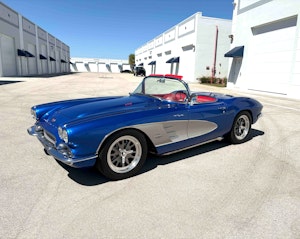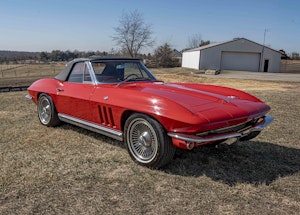Media | Articles
Every 24 Hours of Lemons question answered
Twelve years into its existence, and the 24 Hours of Lemons is still around. The racing series has developed a rabid following due to a high quotient of fun and low barriers to entry. Even with the largest base of active racers in the world, many people still see photos of the 24 Hours of Lemons or hear about it and have no idea what’s going on in any of it. So we whipped up this primer with the Lemons organizers to answer all of the frequently asked questions (FAQ) for the interested, the curious, and the very confused.
What is the 24 Hours of Lemons?
It’s endurance racing for $500 cars. The idea is egalitarian: Racing is for all idiots, not just idiots who can cut checks for a half-million dollars.
OK, I call BS. Those cars don’t look like they cost $500. What gives?
The $500 does not include mandatory safety equipment and some safety-related upgrades (like brakes, fuel cells, and a few other things) are also exempt from the price cap. It does, however, include purchase price and any parts installed related to the engine, transmission, suspension, cooling system, and basically anything that improves speed or reliability. You can also sell off things from the original purchase price to offset upgrades and you can get the car revalued after each race to fix broken things… to a point. Don’t think you can part out a 2017 Ford Mustang and come racing. Ridiculous decorations are often given a blind eye to cost as well, as long at it doesn’t look too professional.
Marketplace
Buy and sell classics with confidence
20180410155653)
20180410160219)
Where and when does Lemons race?
Races take place all over the country with around 20 races per year, some even take place at respectable race tracks like Sonoma Raceway or Barber Motorsports Park. There are also four Concours d’Lemons shows and four road rallies. You can find the full race schedule here or on the front page of the 24 Hours of Lemons website. If you want to see what this is all about, you can get spectator tickets with full paddock access to see the automotive menagerie.
I looked on Craigslist and I didn’t find any $500 cars, so this is obviously crap.
Look harder and lower your standards. Lemons racers have a lot of strategies for this one. Live in a state with vehicle inspections or back fees? Those only apply to cars for road use; you can often pick them up to race for nothing. Regulation-heavy states like California and Massachusetts can make it financially crazy to make a car pass an emissions test or pay back fees on expired registration. That’s where you swoop in with an offer that’s more than the scrap value of some heap. Another strategy: Use search alerts and be the first person to show up and wave four Benjamins in front of someone’s nose. That’s a remarkably effective strategy to the classifieds’ grammatical curiosity that is “NEED GONE.” Keep looking and you’ll find something.
20180410155148)
What is the required safety equipment?
The big items for the car are the six-point (or better) rollcage, racing seat, five- or six-point harness, electrical killswitch, and fire extinguisher or onboard fire-suppression system (mandatory starting in 2019). Those are the minimum requirements, but we’re always happy to see better rollcages and additional measures like window nets. If you aren’t experienced with a welder and tubing bender, we highly recommend hiring a professional to install your roll cage. The Lemons How Not to Fail Tech document outlines the big points.
The mandatory items for drivers are head-to-toe SFI-rated clothing (fire suit, shoes, socks, and long underwear in some instances), a Snell SA2010 or newer helmet (as of 2018), and a head-and-neck restraint. The short-and-sweet Lemons rulebook has more detail. We recommend reading it at least twice.
Why is there so much safety stuff?
Two reasons: 1) Lemons organizers really don’t want people getting hurt. Strangely, we like most of the people who race with us. 2) Our insurers took one look at what we were doing and said, “You’re gonna have to work hard to keep these idiots from hurting themselves.” We take that very seriously.
Alright, back to the $500 thing: How do you make sure people aren’t spending more than $500?
Every car undergoes a rigorous BS Inspection, wherein a panel of BS Judges assess your car, your story for the car, and your documentation regarding it. If the judges figure you’ve overspent on your cheaty car, you will be assigned one penalty lap for every $10 over $500. For example, if the judges figure you spent $550, you’ll start the race five laps down.
20180410155535)
That sounds pretty subjective…
It is pretty subjective and here’s the thing about racing: People in all racing series dispute rules all the time and it always comes down to a subjective reading of the rulebook. Lemons just puts the subjectivity out front. In actuality, the BS Inspection tends to be less rigorous for, say, a ’62 Plymouth Valiant with a Slant Six than it is for a ’96 BMW 325is. Show up with a car that embodies the esprit d’Lemons and the judges are more likely to be lenient.
So you have old, slow crap racing with sports cars? How do they compete with each other?
They really don’t. During BS Inspections, the judges divide Lemons cars into three classes, one of which will probably fit whatever car you happen to bring. Like valuation, the classing assignments are all fairly subjective, but here’s a general breakdown:
Class C, aka No Prayer of Finishing: Like obscenity, you know it when you see it. This is the home of hopeless vehicles that are totally clapped out, older than dirt, homebuilt lunacy, or never designed to be driven anywhere near a racetrack.
Class B, aka No Prayer of Winning: Kind of a catch-all class that can have a lot of variety from things that are slow and steady to V-8 cars that are fast but thirsty and unreliable.
Class A, aka Prayer of Winning: These are cars that had a performance lean when new or cars that generally have capability to win races, even if their terrible racing team isn’t up to the task.
20180410155633)
20180410155052)
Multiple winners, not bad. What do I win?
A little trophy and a bit of money: $400 for Class A, $500 for Class B, and $600 for Class C. Lemons also hands out the Index of Effluency, its top prize for the worst car that does the best (determined subjectively, of course). That comes with $601, a trophy, patches, and a free entry to the next race. There are also awards for Organizer’s Choice, Judges Choice, Heroic Fix, I Got Screwed, and usually a spot reserved for a made-up-on-the-spot trophy specific to the race.
And people try to win these races?
Some do, yes. The best part of Lemons is that there’s ample room for people to get from it what they want. Some people want to compete for wins. Some people want lots of affordable wheel-to-wheel seat time. Some people want to build insane contraptions. Some people just love reviving old cars. And some just like to cook food and socialize. Of the entire field, typically 60–70 percent of people just want seat time.
So what do I need to run in a Lemons race?
In short: a car with the required safety gear, 3-5 teammates, and a valid driver’s license.
Just a driver’s license? Do I need a competition license from a racing school or series?
Nope.
20180410155427)
How do you enforce driving standards then?
Drivers who put wheels off the track, spin, pass under yellow, make contact, or speed in the pits get black flags. That sends the driver to the BS Judges, who will penalize the team with an array of embarrassing and time-consuming penalties. Believe it or not, shaming drivers for their poor choices—beyond racing in Lemons—seems to work about as well as any other kind of licensing system.
I don’t like being embarrassed.
Then drive cautiously. See how that works?
I thought I was asking the questions here.
That was not a question.
Alright, so if it’s $500 cars plus safety equipment, what does it really cost to go racing?
The real cost varies a lot depending on teams’ resources, but a first-time team will typically spend between $3,500 and $5,500 for a first weekend. Your personal cost also depends on how many drivers are on your team (and therefore how many ways it’s split). A lot of that cost is associated with building the car, so the costs decrease for subsequent races. It probably sounds like a lot, but this is as cheap as wheel-to-wheel racing gets and you’ll have a lot of fun doing it.
What if I get stuff for free? My buddy has a bunch of parts in his garage.
Not so fast. The biggest way to prevent this kind of cheating is the claimer rule. At the end of the race, the organizer can claim any car for $500. They’ve excercised this twice. Second, there’s no way to prove you got something for free. If you add parts to your car that don’t fall under the safety equipment exemption, and don’t have a paper trail or plausible story for what it costs, the judges will assign a rough price for you.
So once I hit $500, I can’t add anyhing to the car?
No. As mentioned earlier, after each race you can request an official appraisal on you car, and chances are it will be far less than $500. You can use the difference to pay for upgrades for the next race. The judges will also be lenient if you keep with the spirit of Lemons and don’t try too hard to cheat. So if you blow an engine and put a stock 150,000-mile junkyard motor back in, you won’t get many questions even if you spent $502 on it.
Are there any other ways to reduce those costs?
You can reduce some of the spending by purchasing old, pre-raced cars from places like the Lemons’ Forum, RacingJunk.com, or other classifieds sites. The prices and condition of such cars varies as widely as anything else, but there are a lot of Lemons cars floating around out there. You do have to be careful to make sure whatever car you buy can meet current safety standards with minimal work, lest you want to try and tear out a roll cage and build a new one.
Do people really buy used Lemons cars?
Actually, quite a few do and many people have done quite well with second-hand Lemons.
Any other recommended reading?
Sure. It’s a deep pool into which you can dive, but we’d start by reading the rulebook, which should only take 10–15 minutes. The “WTF” section on the Lemons site can be illuminating. You can find some helpful people to talk to on the Lemons Forum. This 2010 Car and Driver story describes Lemons origins if you care for a history lesson. And if you want some inspiration from some of the wilder builds, here’s a list of some of the crazier cars in the series’ history.
20180410162209)








20180410154935)
20180410155824)
20180410160038)

